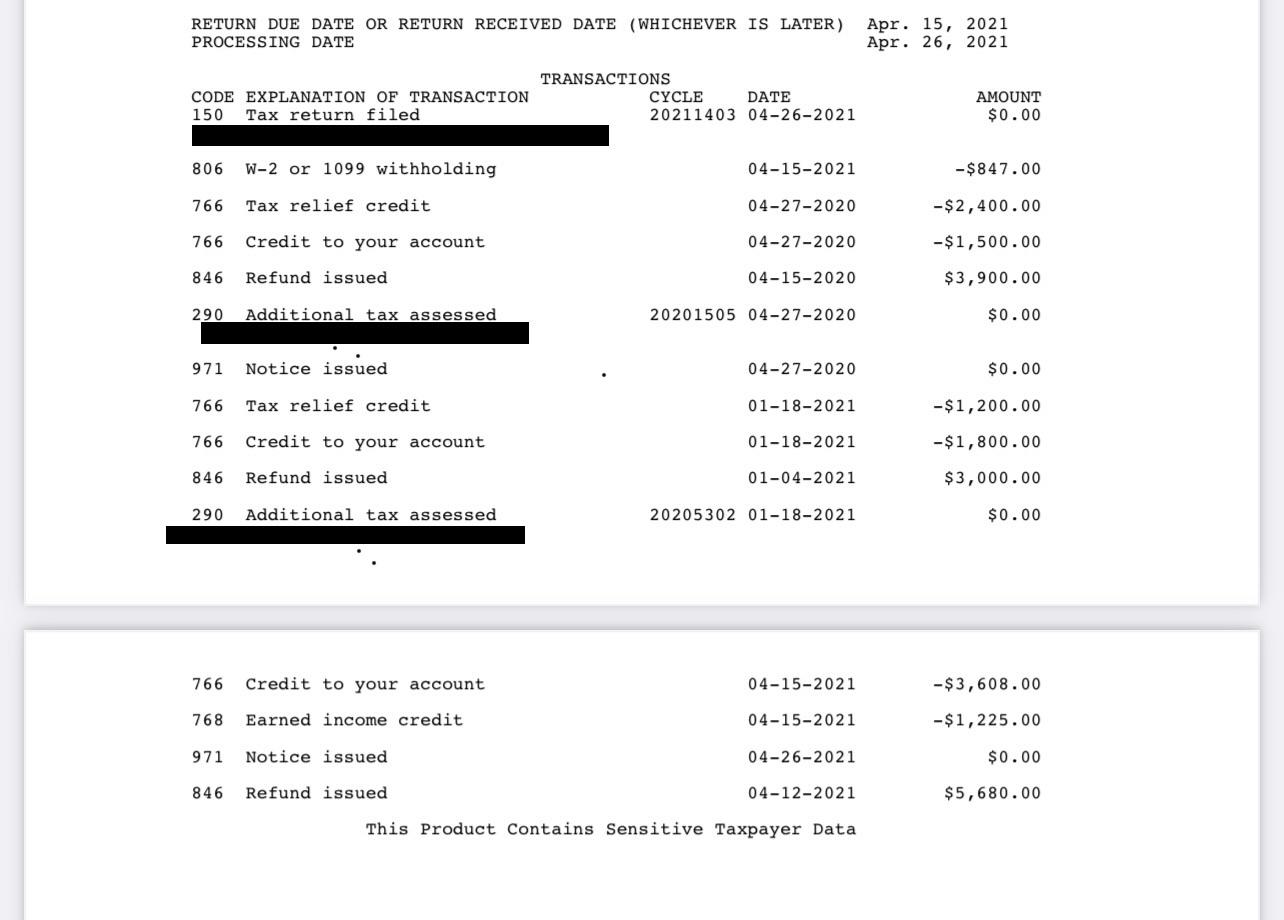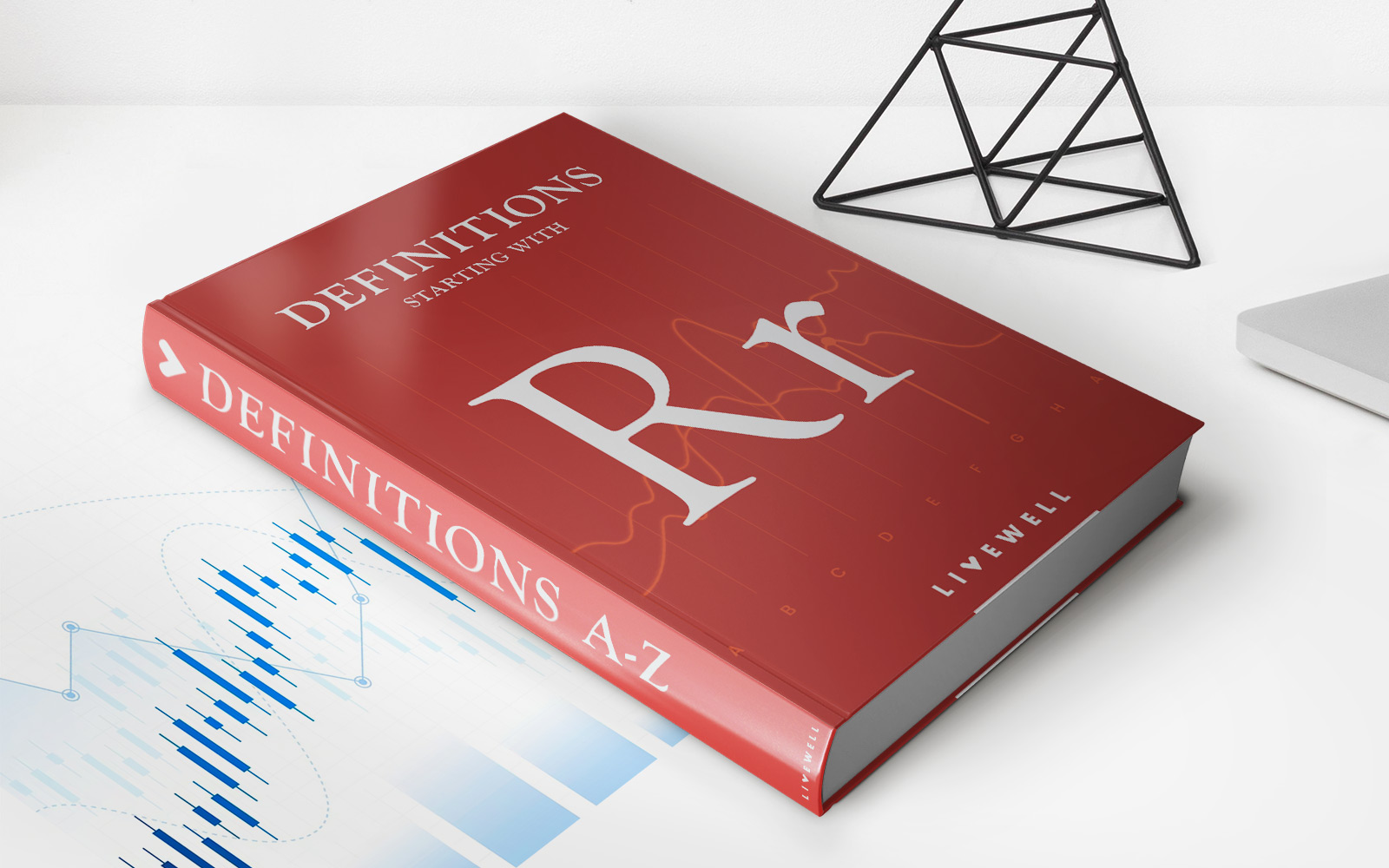

Finance
How To Read Stocks Charts
Published: January 17, 2024
Learn how to read stocks charts and make informed investment decisions in the world of finance.
(Many of the links in this article redirect to a specific reviewed product. Your purchase of these products through affiliate links helps to generate commission for LiveWell, at no extra cost. Learn more)
Table of Contents
Introduction
Welcome to the exciting world of stock market analysis! If you’ve ever wondered how experienced traders are able to make informed decisions, predict market movements, and maximize their profits, then you’re in the right place. In this article, we will delve into the fascinating realm of reading stock charts and understanding their intricacies.
Stock charts are visual representations of a stock’s price movement over a given period of time. They provide invaluable insights into the behavior of a stock and can help investors identify trends, support and resistance levels, and potential entry or exit points.
Reading stock charts is an essential skill for investors looking to make informed decisions and navigate the ever-changing landscape of the stock market. By understanding the information presented in these charts, you can gain a deeper understanding of a stock’s historical performance and use it to inform your investment strategy.
Whether you’re a seasoned investor or just getting started, learning how to read stock charts is crucial to your success. By deciphering the patterns and indicators on these charts, you can gain a competitive edge and make more informed investment decisions.
Throughout this article, we will explore the different types of stock charts, delve into the various elements and indicators that make up a stock chart, and provide you with valuable tips on how to analyze and interpret the information presented.
So, if you’re ready to dive into the exciting world of stock chart analysis, let’s begin our journey towards becoming a more knowledgeable and confident investor!
Understanding Stock Charts
Before we jump into deciphering the various elements of stock charts, it’s important to understand the basic structure and purpose of these charts. Stock charts are graphical representations of a stock’s price movement over a specific period of time. They provide a visual snapshot of a stock’s performance and can reveal valuable insights about its past and potential future trends.
Stock charts typically have two axes – the x-axis represents time, while the y-axis represents price. The x-axis is divided into intervals, such as days, weeks, or months, depending on the selected time frame. The y-axis represents the price range, with lower prices at the bottom and higher prices at the top.
Stock charts are created using historical price data, which is plotted on the chart and connected to form a line or bar. By analyzing the patterns and trends in these lines or bars, investors can gain insights into the stock’s performance and make informed decisions.
Stock charts are often accompanied by various technical indicators and overlays, which provide additional information about the stock’s price movement. These indicators can include moving averages, volume, support and resistance levels, and various chart patterns.
There are three main types of stock charts: line charts, bar charts, and candlestick charts. Each type presents the price data in a slightly different format, allowing investors to choose the representation that suits their analysis style and preferences.
Understanding stock charts is crucial for investors as it allows them to identify trends, support and resistance levels, and potential entry or exit points. By analyzing these charts, investors can gain valuable insights into a stock’s behavior, improve their decision-making process, and increase their chances of success in the stock market.
Now that we have a grasp of the basics, let’s dive into the different types of stock charts and explore how to interpret and analyze them effectively.
Types of Stock Charts
When it comes to analyzing stock market data, there are three primary types of charts commonly used by investors: line charts, bar charts, and candlestick charts. Each of these chart types presents the stock’s price and volume information in a unique and visually appealing way. Let’s explore each of these chart types in more detail:
-
Line Charts:
Line charts are the most basic and straightforward type of stock chart. They represent the closing prices of a stock over a specific period of time by connecting the dots on the chart. The resulting line shows the overall trend of the stock’s price movement. Line charts are useful for identifying long-term trends and are commonly used by beginner investors.
-
Bar Charts:
Bar charts provide more detailed information compared to line charts. They display the stock’s opening, closing, high, and low prices for a given time period. Each bar on the chart represents a specific time interval, such as a day, and provides a visual representation of the price range during that period. The vertical line extending from the bar represents the high and low prices, while the horizontal line on the left side represents the opening price, and the horizontal line on the right side represents the closing price. Bar charts are widely used by technical analysts to identify patterns and trends in stock prices.
-
Candlestick Charts:
Candlestick charts originated in Japan and have become immensely popular among traders worldwide. Similar to bar charts, they provide information about the opening, closing, high, and low prices. However, candlestick charts offer a more visually appealing representation of this data. Each “candlestick” on the chart consists of a rectangular body and thin vertical lines, known as “wicks” or “shadows.” The body represents the price range between the opening and closing prices, with a green or white body indicating a price increase and a red or black body indicating a price decrease. The wicks represent the high and low prices. Candlestick charts are highly effective in identifying price patterns and reversals.
Each type of stock chart has its advantages and is suitable for different analysis approaches. Some investors prefer the simplicity of line charts, while others rely on the detailed information provided by bar charts or the visual patterns revealed by candlestick charts. It’s essential to familiarize yourself with all three chart types to choose the one that aligns with your investment style and helps you make informed decisions.
Now that we’ve explored the different types of stock charts available, let’s move on to understanding how to read and interpret these charts effectively.
Line Charts
Line charts are one of the simplest and most widely used types of stock charts. They provide a clear representation of a stock’s price movement over time by plotting the closing prices and connecting them with a line. Line charts are particularly useful for identifying long-term trends and assessing the overall direction of a stock’s price movement.
When analyzing a line chart, the x-axis represents time, while the y-axis represents price. The line on the chart shows the closing prices of the stock at each time interval. By connecting these points, a continuous line is formed, providing a visual representation of the stock’s price history.
Line charts are especially popular among beginner investors due to their simplicity. They provide a straightforward depiction of a stock’s performance over time, allowing for easy identification of upward or downward trends.
One of the key benefits of line charts is their ability to reveal long-term patterns and trends. By observing the slope and direction of the line, investors can determine whether a stock has been consistently increasing, decreasing, or moving sideways. This information can be valuable in assessing the overall strength of a stock’s trend.
Line charts can also be useful for identifying key support and resistance levels. These levels indicate price points where a stock has historically encountered upward or downward pressure. By observing the line chart and noting areas of consolidation or reversal, investors can identify potential support levels, where buying pressure may emerge, or resistance levels, where selling pressure may intensify.
While line charts offer a simplified view of a stock’s price movement, it’s important to note that they lack the detailed information provided by other chart types, such as bar or candlestick charts. Line charts only display the closing prices and do not provide information about intraday price fluctuations or volatility.
To obtain a more comprehensive analysis, many investors combine line charts with other technical indicators or overlay additional chart types to gain a better understanding of a stock’s behavior.
In summary, line charts offer a straightforward way to assess long-term trends and the overall direction of a stock’s price movement. They allow investors to quickly identify upward or downward movements and can serve as a useful starting point for analyzing a stock’s performance. However, for a more detailed analysis, it’s important to utilize other chart types and indicators in conjunction with line charts.
Now that we’ve explored line charts, let’s move on and discover another type of stock chart – bar charts.
Bar Charts
Bar charts provide a more detailed representation of a stock’s price movement compared to line charts. They offer valuable information about the opening, closing, high, and low prices of a stock for a specific time period. Bar charts are widely used by technical analysts to identify patterns and trends in stock prices.
When analyzing a bar chart, each bar represents a specific time interval, such as a day, week, or month. The top of the vertical bar indicates the highest price reached during that interval, while the bottom represents the lowest price. The horizontal line on the left side of the bar represents the opening price, and the horizontal line on the right side represents the closing price.
Bar charts allow investors to quickly ascertain the range of prices within a given time period. The length of the bar represents the price range between the high and low points, while the horizontal lines provide information about the opening and closing prices. If the closing price is higher than the opening price, the bar is typically shaded or colored differently to indicate a price increase. In contrast, if the closing price is lower than the opening price, the bar is shaded or colored differently to indicate a price decrease.
One of the key benefits of bar charts is their ability to reveal price volatility within a given time frame. By observing the range between the high and low prices, investors can gauge the level of market activity and assess whether a stock is experiencing high or low volatility. Additionally, bar charts provide a visual representation of the relationship between the opening and closing prices, allowing investors to assess buying or selling pressure during a specific interval.
Bar charts are often used in conjunction with other technical indicators to enhance analysis. For example, combining bar charts with moving averages or volume indicators can provide a more comprehensive understanding of a stock’s performance and help identify potential trends or reversals.
While bar charts offer greater detail compared to line charts, they can still present a large amount of information in a visually comprehensible way. By observing the patterns and trends within the bars, investors can make informed decisions about a stock’s potential future movement.
In summary, bar charts provide a detailed view of a stock’s price movement, allowing investors to analyze the range between high and low prices and assess the relationship between the opening and closing prices. They are a popular tool among technical analysts for identifying patterns and trends in the stock market.
Now that we have explored bar charts, let’s move on to learning about another popular type of stock chart – candlestick charts.
Candlestick Charts
Candlestick charts are a popular and visually appealing type of stock chart that originated in Japan. They provide valuable insights into a stock’s price movement by displaying the opening, closing, high, and low prices for a specific time period. Candlestick charts are highly effective in identifying price patterns, reversals, and market sentiment.
Each “candlestick” on the chart represents a specific time interval, such as a day, week, or month. The body of the candlestick represents the price range between the opening and closing prices. A green or white body indicates that the closing price is higher than the opening price, suggesting a price increase. In contrast, a red or black body indicates that the closing price is lower than the opening price, indicating a price decrease.
In addition to the body, candlestick charts have thin lines, known as “wicks” or “shadows,” extending from the top and bottom of the body. The upper shadow represents the high price reached during the time period, while the lower shadow represents the low price.
Candlestick charts are powerful tools for identifying price patterns and reversals. Various patterns, such as doji, hammer, engulfing, and shooting star, can indicate potential changes in market sentiment and signal a reversal in the stock’s price movement. These patterns are formed by the relationship between the body and the wicks of the candlestick.
Traders use candlestick charts to observe the interaction between buyers and sellers. Long green or white bodies indicate strong buying pressure and confidence in the stock. Conversely, long red or black bodies suggest strong selling pressure. The length of the wicks can also provide insights into market sentiment. Long upper wicks indicate that buyers attempted to push the price higher but faced resistance, while long lower wicks suggest that sellers tried to drive the price lower but faced support.
Candlestick charts offer a wealth of information about a stock’s price movement in a visually appealing format. By analyzing the various patterns and formations, investors can make more informed decisions about when to buy or sell a stock.
It’s important to note that candlestick charts should not be solely relied upon for decision-making. They are most effective when combined with other technical indicators and analysis techniques to confirm potential trends or reversals.
In summary, candlestick charts provide a visually appealing representation of a stock’s price movement and offer valuable insights into market sentiment. By analyzing the patterns formed by the candlesticks, investors can gain a deeper understanding of price patterns, reversals, and potential market trends.
Now that we have explored candlestick charts, let’s continue our journey and discover how to read and analyze stock charts effectively.
Reading Stock Charts
Reading stock charts is a skill that can greatly enhance your ability to make informed investment decisions. By analyzing the different elements and patterns within a stock chart, you can gain valuable insights into a stock’s performance, identify trends, support and resistance levels, and potential entry or exit points. Here are some key aspects to consider when reading stock charts:
-
Identifying Trends:
One of the primary objectives of reading stock charts is to identify trends. Trends can be categorized as uptrends, downtrends, or sideways trends. An uptrend is characterized by a series of higher highs and higher lows, indicating a bullish market. Conversely, a downtrend is marked by lower highs and lower lows, indicating a bearish market. Sideways or horizontal trends occur when the stock’s price remains relatively flat. Identifying the prevailing trend can help determine the overall market sentiment and guide investment decisions.
-
Support and Resistance Levels:
Support and resistance levels are price levels at which a stock has historically experienced buying or selling pressure. Support levels act as a floor, preventing the stock’s price from falling further. Resistance levels, on the other hand, act as a ceiling, preventing the stock’s price from rising further. These levels are significant because they offer insights into potential buying or selling opportunities. Traders often look for stocks that bounce off support levels or break through resistance levels as potential entry or exit points.
-
Moving Averages:
Moving averages are technical indicators that smooth out price fluctuations over a specified period. They provide a clearer picture of a stock’s trend by eliminating short-term price noise. Commonly used moving averages include the 50-day moving average and the 200-day moving average. When the shorter-term moving average crosses above the longer-term moving average, it is considered a bullish signal, while a bearish signal occurs when the shorter-term moving average crosses below the longer-term moving average.
-
Volume Analysis:
Volume refers to the number of shares traded during a given period. Analyzing volume can provide insights into the strength of a price movement. When a stock price rises with high volume, it suggests strong buying pressure, indicating a potentially sustainable upward trend. Conversely, a falling price with high volume may indicate strong selling pressure and a potential downward trend. Volume analysis can help confirm or contradict price movements and provide greater confidence in identifying trends or potential reversals.
-
Analyzing Price Patterns:
Price patterns are repetitive formations that occur on stock charts and can offer valuable insights into potential future price movements. Common price patterns include double tops, double bottoms, head and shoulders, and triangles. These patterns can indicate trend reversals, continuation of existing trends, or potential breakout opportunities. Analyzing these patterns in combination with other technical indicators can enhance your ability to make well-informed trading decisions.
-
Charting Tools and Indicators:
In addition to the elements mentioned, there are numerous charting tools and technical indicators available to aid in the analysis of stock charts. These tools include trendlines, moving averages, Bollinger Bands, Fibonacci retracements, and more. Each tool or indicator offers unique insights into a stock’s price movement and can provide confirmation or additional information to support your analysis.
It’s important to note that reading stock charts is both an art and a science. It requires a combination of technical analysis skills, market knowledge, and experience. Regularly practicing and analyzing stock charts will help improve your proficiency in interpreting chart patterns and identifying potential investment opportunities.
To gain a comprehensive understanding of a stock’s performance, consider using multiple time frames when analyzing charts. This will help you identify short-term and long-term trends and support your decision-making process.
In summary, reading stock charts involves analyzing trends, support and resistance levels, moving averages, volume, price patterns, and utilizing various charting tools and indicators. Mastering the skill of reading stock charts can significantly improve your ability to make informed investment decisions and increase your chances of success in the stock market.
Now that we have explored how to read stock charts, let’s move on to exploring some charting tools and indicators that can enhance your analysis.
Identifying Trends
Identifying trends is a fundamental aspect of reading stock charts and is essential for understanding a stock’s price movement. By recognizing trends, investors can better gauge market sentiment and make more informed decisions. Here are some key points to consider when it comes to identifying trends:
Uptrends: An uptrend is characterized by a series of higher highs and higher lows over time. In an uptrend, the stock’s price consistently rises, indicating a bullish market sentiment. This suggests that demand for the stock is outweighing supply, resulting in upward price movement. Uptrends can serve as potential buying opportunities, as investors look to take advantage of the stock’s upward momentum.
Downtrends: A downtrend, on the other hand, is marked by a series of lower highs and lower lows. In a downtrend, the stock’s price consistently declines, indicating a bearish market sentiment. This suggests that supply of the stock is outweighing demand, resulting in downward price movement. Downtrends can serve as potential selling opportunities, as investors may seek to minimize losses or short-sell the stock to profit from its downward momentum.
Sideways Trends: In addition to uptrends and downtrends, stock prices can also move in a sideways or horizontal pattern. In a sideways trend, the stock’s price fluctuates within a defined range, with neither significant upward nor downward movement. This can occur when there is a balance between buyers and sellers, resulting in a period of consolidation. Sideways trends can suggest indecision in the market and may be a sign of a potential breakout or reversal in the future.
Identifying trends is a crucial skill for investors, as it can provide insight into the overall market sentiment and help investors determine whether to adopt a bullish or bearish strategy. Trends can be identified relatively easily by visually examining the stock chart for the presence of higher highs and higher lows (uptrend), lower highs and lower lows (downtrend), or a lack of clear directional movement (sideways trend).
It is important to consider the time frame being analyzed when identifying trends. Trends can appear differently depending on whether you are looking at short-term (intraday), medium-term (daily or weekly), or long-term (monthly or yearly) charts. For example, what may appear as an uptrend on a short-term chart could be part of a larger downtrend on a long-term chart.
Additionally, it is beneficial to use technical indicators such as moving averages or trendlines to confirm and validate trends. Moving averages smooth out price fluctuations and provide a clearer understanding of the overall trend. Trendlines, drawn by connecting the highs or lows on a chart, can also help identify the direction of a trend.
In summary, identifying trends is a crucial aspect of reading stock charts. Understanding whether a stock is in an uptrend, downtrend, or sideways trend can help guide investment decisions and determine appropriate entry or exit points. It is important to consider the time frame being analyzed and utilize technical indicators to validate and confirm trends.
Now that we have explored how to identify trends, let’s move on to understanding support and resistance levels in stock charts.
Support and Resistance Levels
Support and resistance levels are important concepts in technical analysis that help investors identify key price levels at which a stock may experience buying or selling pressure. These levels can provide valuable insights into potential entry and exit points and are crucial in understanding the dynamics of supply and demand within the market.
Support Level: A support level is a price level at which a stock has historically found support, meaning it has encountered buying pressure that prevents it from falling further. Support levels are often formed as a result of previous price lows or areas where buyers are willing to step in and purchase the stock, creating demand. When the stock price approaches a support level, it is expected to “bounce” off this level and potentially reverse its downward trend.
Resistance Level: A resistance level is the opposite of a support level. It is a price level at which a stock has historically faced selling pressure that prevents it from rising further. Resistance levels are often formed as a result of previous price highs or areas where sellers are willing to sell the stock, creating supply. When the stock price approaches a resistance level, it is expected to encounter selling pressure, making it difficult for the stock to surpass and continue its upward trend.
Support and resistance levels can be identified by analyzing stock charts and observing price movements. They can appear as horizontal lines or zones on the chart, indicating price levels at which buyers or sellers have historically been active. The more times a stock bounces off a support or resistance level, the stronger that level is believed to be.
Support and resistance levels can act as psychological barriers in the market. Traders and investors are aware of these levels and often adjust their buying or selling decisions accordingly. When a stock breaks through a resistance level, it may signal a potential upward breakout and attract more buyers. Conversely, when a stock falls below a support level, it may indicate a potential downward breakout and discourage buyers, attracting more sellers.
It is important to note that support and resistance levels are not fixed, and they can change over time. Breakouts or breakdowns can occur, causing former support levels to become resistance levels and vice versa. Therefore, it is necessary to regularly update and adjust these levels based on current price movements and market conditions.
In summary, support and resistance levels are instrumental in understanding market dynamics and identifying potential entry and exit points. They represent areas of buying and selling pressure within the market and can help investors make informed decisions. Recognizing these levels and their significance can enhance the accuracy of technical analysis and improve the overall success of trading strategies.
Now that we have explored support and resistance levels, let’s move on to understanding the significance of moving averages in stock charts.
Moving Averages
Moving averages are commonly used technical indicators that help investors analyze the overall trend and smooth out price fluctuations on stock charts. By calculating the average price of a stock over a specified period, moving averages provide valuable insights into the stock’s direction and potential reversal points.
There are different types of moving averages, but two of the most commonly used are the simple moving average (SMA) and the exponential moving average (EMA). The SMA calculates the average price by summing up a specific number of prices over a chosen period and dividing it by that number. The EMA places more weight on recent prices, giving them a higher influence in the calculation.
Moving averages help identify trends and provide support and resistance levels. The most commonly used moving averages are the 50-day and 200-day moving averages, although other time periods can also be used based on an investor’s preference and trading style.
When a stock’s price is above its moving average, it suggests a bullish trend. Conversely, when the price falls below the moving average, it indicates a bearish trend. Traders often use the crossover of moving averages to confirm potential trend changes. For example, when the shorter-term moving average (e.g., 50-day) crosses above the longer-term moving average (e.g., 200-day), it is considered a bullish signal. On the other hand, when the shorter-term moving average crosses below the longer-term moving average, it is seen as a bearish signal.
Moving averages can also act as support or resistance levels. During an uptrend, the stock’s price often finds support near the moving average, with the moving average acting as a dynamic support level. In a downtrend, the moving average can act as a resistance level, where the stock’s price may struggle to push through and continue its downward momentum.
Traders and investors often use moving averages in conjunction with other technical indicators to confirm signals or strengthen their analysis. Combining moving averages with other trend-following indicators, such as the Moving Average Convergence Divergence (MACD) or the Relative Strength Index (RSI), can provide a more comprehensive understanding of a stock’s performance and help identify potential entry or exit points.
It’s important to note that moving averages are lagging indicators, meaning they rely on past price data. Therefore, they may not predict sudden market changes or provide real-time signals. It is crucial to use other technical analysis tools and consider the overall market conditions when incorporating moving averages into investment decisions.
In summary, moving averages are valuable tools for identifying trends, support and resistance levels, and potential entry or exit points. They help smooth out price fluctuations and provide a clearer picture of a stock’s overall direction. By understanding moving averages and using them in conjunction with other technical indicators, investors can make more informed decisions based on historical price patterns.
Now that we have explored moving averages, let’s delve into the significance of volume analysis in stock charts.
Volume Analysis
Volume analysis is a critical component of reading stock charts as it provides insights into the level of market activity and the strength of price movements. Volume refers to the number of shares or contracts traded within a specific time period. Analyzing volume can help investors gauge the level of participation and interest in a stock, confirming trends and identifying potential reversals.
When analyzing volume, it’s important to compare the current volume to the average volume for a given stock. Higher-than-average volume indicates increased market activity and suggests greater conviction behind price movements. This can provide confirmation for trends or potential breakouts, as higher volume often reflects increased buying or selling pressure.
Volume analysis can reveal important insights into the psychology of market participants. For example, if a stock price is increasing accompanied by high volume, it suggests strong buying interest and indicates a positive market sentiment. Conversely, if a stock price is decreasing with high volume, it demonstrates strong selling interest and indicates a negative market sentiment.
Volume analysis can also be utilized in conjunction with other technical indicators to confirm signals or identify potential trend reversals. For example, traders often look for divergence between price and volume, where price is moving in one direction (e.g., upward) but volume is decreasing. This divergence may indicate a weakening of the trend and a potential reversal in the near future.
Another useful volume indicator is On-Balance Volume (OBV), which tracks the cumulative volume of a stock. OBV is particularly useful for identifying whether buying or selling pressure is dominating the market. When the OBV line is moving upward, it suggests buying pressure, while a downward movement indicates selling pressure.
Volume analysis is especially valuable in identifying potential support and resistance levels. Higher volume often occurs near significant price levels, indicating increased market interest. These levels can act as support or resistance, as heavy trading activity suggests areas of buying or selling interest.
It is essential to note that volume is relative and should be compared within the context of the stock being analyzed. Different stocks have varying average volume levels, so what may be considered high volume for one stock may be average for another. It’s important to consider the historical trading volume and compare it to the current volume to determine the significance.
In summary, volume analysis provides valuable insights into the level of market activity, confirming trends and identifying potential reversals. Analyzing volume allows investors to understand the strength behind price movements and the psychology of market participants. By incorporating volume analysis into technical analysis, investors can make more informed decisions based on the level of market participation.
Now that we have explored volume analysis, let’s move on to understanding the importance of price patterns in stock charts.
Analyzing Price Patterns
Price patterns are repetitive formations that occur on stock charts and provide valuable insights into potential future price movements. By analyzing these patterns, investors can identify trend continuation, trend reversal, or potential breakout opportunities. Understanding and interpreting price patterns can help traders make informed decisions about when to enter or exit a trade.
There are various types of price patterns that can emerge on stock charts, each with its own unique characteristics and indications. Some common price patterns include double tops and bottoms, head and shoulders, triangles, and flags. It’s important to note that price patterns can occur on different timeframes, ranging from intraday charts to long-term charts.
Double tops and bottoms are reversal patterns that occur when the price reaches a high, pulls back, and then tests the previous high again before reversing its direction. This pattern suggests a potential trend reversal, with the double top signaling a shift from an uptrend to a downtrend, and the double bottom indicating a transition from a downtrend to an uptrend.
The head and shoulders pattern is another reversal pattern characterized by a central peak (the head) flanked by two smaller peaks (the shoulders). This pattern indicates a potential trend reversal from bullish to bearish. When the price breaks below the neckline, which connects the lows of the shoulders, it suggests a further downward movement is likely.
Triangles are consolidation patterns that occur when the price creates a series of higher lows and lower highs, converging to form a triangle shape. This pattern suggests a period of indecision in the market, with a potential breakout anticipated in either direction. Traders look for a decisive breakout above the upper trendline or below the lower trendline to confirm the direction of the ensuing trend.
Flags or pennants are continuation patterns that occur after a strong price movement. They are characterized by a short-term period of consolidation, forming a rectangular shape. Flags and pennants suggest a temporary pause in the prevailing trend before the resumption of the original trend. A breakout above or below the flag/pennant pattern confirms the continuation of the trend.
When analyzing price patterns, it is important to consider other technical indicators and factors that support the pattern’s interpretation. Confirmation through volume analysis, trendlines, moving averages, or other technical tools can increase the reliability of the pattern signal.
It is worth noting that not all price patterns are equally reliable, and false signals can occur. Therefore, risk management and careful consideration of other factors, such as market conditions and fundamental analysis, are crucial when making trading decisions based on price patterns.
In summary, analyzing price patterns is an essential part of technical analysis and can help traders identify potential trend reversals, continuation patterns, or breakout opportunities. Understanding the characteristics and implications of different price patterns, along with confirmation from other technical indicators, can improve the accuracy of market analysis and inform trading decisions.
Now that we have explored price patterns, let’s move on to understanding the significance of charting tools and indicators in stock chart analysis.
Charting Tools and Indicators
Charting tools and indicators are essential components of technical analysis that help investors enhance their understanding of stock charts and make more informed investment decisions. These tools provide additional insights into price movements, trends, and potential reversals. Here are some commonly used tools and indicators:
Trendlines: Trendlines are diagonal lines drawn on a stock chart to connect a sequence of highs or lows. They help identify the direction of a trend and can act as support or resistance levels. Trendlines can be useful for confirming the strength of a trend or identifying potential trend reversals.
Fibonacci Retracements: Fibonacci retracements utilize the Fibonacci sequence to determine potential support and resistance levels in a stock’s price movement. Traders draw lines based on specific percentage levels (such as 38.2%, 50%, and 61.8%) of the previous price move. These levels can indicate where the price may retrace or bounce back before continuing in the direction of the trend.
Bollinger Bands: Bollinger Bands consist of a moving average and two standard deviation bands placed above and below the moving average. They help identify volatility and potential price breakouts. When the price moves outside the bands, it may suggest overbought or oversold conditions, indicating a potential reversal or continuation of the trend.
Relative Strength Index (RSI): The RSI is a momentum oscillator that measures the speed and change of price movements. It oscillates between 0 and 100, with readings above 70 considered overbought and readings below 30 indicating oversold conditions. The RSI can help identify potential trend reversals or confirm the strength of a trend.
Moving Average Convergence Divergence (MACD): The MACD is a trend-following momentum indicator that helps identify potential buy and sell signals. It consists of two lines – the MACD line (the difference between two moving averages) and the signal line (a moving average of the MACD line). Crossovers between the two lines and divergences can provide buying or selling opportunities.
These are just a few examples of the many charting tools and indicators available to traders and investors. It is important to understand their limitations and use them in conjunction with other technical analysis methods and fundamental analysis to build a comprehensive picture of a stock’s potential behavior.
Each charting tool and indicator has its own strengths and weaknesses, and different traders may have varying preferences for which tools they choose to incorporate into their analysis. Combination and customization of these tools based on individual trading strategies and goals is key.
Furthermore, it is crucial to consider the specific characteristics of each stock being analyzed. Factors such as the stock’s volatility, liquidity, and sector dynamics can influence the effectiveness of different charting tools and indicators.
In summary, charting tools and indicators offer valuable insights into price movements, trends, and potential reversals. Utilizing these tools alongside other analysis techniques can enhance the accuracy of market analysis and facilitate more informed trading decisions.
Now that we have explored charting tools and indicators, let’s conclude our discussion by summarizing the key points covered in this article.
Conclusion
Understanding how to read stock charts is an essential skill for investors looking to navigate the complex world of the stock market. By analyzing different chart types, including line charts, bar charts, and candlestick charts, investors can gain valuable insights into a stock’s price movement and make more informed investment decisions.
Throughout this article, we explored various aspects of reading stock charts. We discussed the importance of identifying trends and understanding support and resistance levels. We delved into the significance of moving averages and volume analysis, as well as the analysis of price patterns and the use of charting tools and indicators.
Identifying trends allows investors to assess the overall market sentiment and determine the appropriate investment strategy. Recognizing support and resistance levels provides insights into potential entry and exit points. Moving averages help smooth out price fluctuations and offer a clearer understanding of a stock’s trend. Volume analysis helps gauge market activity and the strength of price movements. Analyzing price patterns assists in identifying trend reversals, continuation patterns, and potential breakouts. Charting tools and indicators provide additional insights into price movements and trend confirmations.
It’s important to note that no single tool or indicator can guarantee profitability in the stock market. Technical analysis should be used in conjunction with other analysis techniques, such as fundamental analysis and market research, to make well-informed investment decisions.
By continuously practicing and analyzing stock charts, traders and investors can sharpen their skills and develop a better understanding of market dynamics. Regularly updating and adjusting analysis techniques based on current market conditions is crucial for successful trading.
In conclusion, learning how to read and interpret stock charts empowers investors to make more informed decisions and navigate the complexities of the stock market with greater confidence. By incorporating the information and techniques discussed in this article, investors can enhance their analytical skills and improve their chances of success in their investment endeavors.














